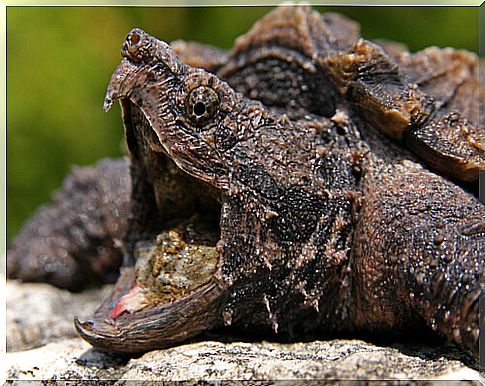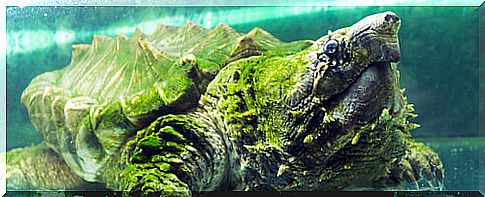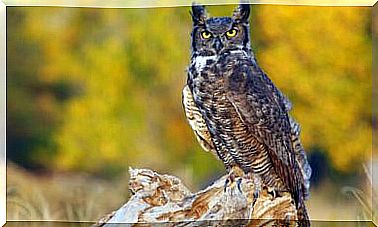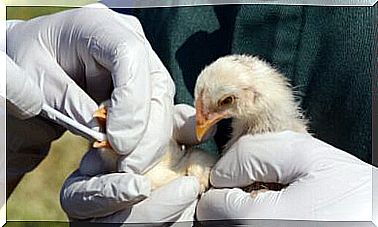The Alligator Turtle: Everything You Need To Know

The alligator turtle is one of the largest turtles in the world. Its pointed shell and prominent jaw give it a voracious, prehistoric appearance.
The alligator turtle scientifically known as Macrochelys temminckii belongs to the chelidid family, made up of some of the American species. Specifically, this is characterized by being the largest freshwater turtle in North America, and it reaches an average weight of 80 kilograms and about 70 centimeters in length.
Morphology and behavior of the alligator turtle
This reptile has a head equipped with a large jaw, as well as its powerful and scaly tail whose length is similar to that of the shell. The latter stands out for its width and for being composed of three rows of pointed ridges. Its shades range from brown to gray, with a lighter underside.
Morphologically, the alligator turtle is often confused with the snapping turtle, Chelydra serpentina, which also features a large head and shell with sharp protrusions. However, their weight is around 30 kilograms and they are mostly terrestrial.
The mouth of the alligator turtle has a vermiform tongue whose movement is designed to attract the attention of the fish, its main prey. They are opportunistic carnivores, so that their diet is characterized by its great diversity, and it is that they eat from amphibians, small mammals, birds, insects, to carrion and plants.

Normally, the laying of eggs occurs between the months of April and June, with clutches that reach 50 copies. The deposition occurs in cavities close to the water and hatching takes place after three months, when the young go by themselves to the shore.
The moment of nesting is one of the few moments in which the caiman turtle leaves the aquatic environment. The rest of the time they usually stay in the water, with their head on or under the surface looking for food.
Although its character is less aggressive than that of the snapping turtle, its powerful jaw can cause serious injury or even death.
Habitat and conservation
The alligator turtle spends most of its life underwater and, although it can be found in all kinds of lakes, swamps, ponds or streams, it has a preference for mighty rivers of a certain depth. When nesting, or when faced with a possible threat, it seeks refuge among leaves, branches or submerged.
Their distribution extends through southern Georgia, west and east Texas, the northern part of the Mississippi River, and southeastern Iowa. In the state of Indiana they are considered endangered.

This species hardly has any predators, especially when it reaches maturity. However, the human being is the one who has contributed to its accelerated decline in terms of number of individuals.
Their poaching is aimed at selling meat and shells on the black market. In addition, anthropic action is also responsible for the loss of habitat, both due to deforestation and pollution of aquatic ecosystems.
The International Union for Conservation of Nature (IUCN) considers that the caiman tortoise is in a vulnerable state, a fact that is included in the so-called red list. This situation has led various states to legally regulate the prohibition of their capture, whether for commercial purposes or not.
In recent years, the tightening of the law together with some measures, such as captive breeding, have managed to increase, although very slowly, its population. However, the human being must be aware that his action is the greatest threat to the planet and its members.









